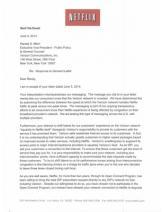Applied game theory 101: Valve’s Steam Summer Sale involves a meta game with teams of Steam users competing for daily prizes. On Reddit the players join together to take turns winning daily. Valve gets wise and performs an existential attack, changing the rules to make it harder for players to want to coordinate.
Still, that all the players joined together to game the system gives me hope for humanity. Its a self organized solution to a tragedy of the commons problem. Only in this case the tragedy is by design and is updated to be more tragic.
A bogus SoundCloud takedown anecdote and a brief history of and issues with US copyright law.
Another reminder that the rest of the Western world has a public domain day every year in which new IP enters the public domain
From Inside Edward Snowden’s Life as a Robot:
Wizner had to jump on a phone call during a meeting with his whistleblower client. When he got off the phone, he found that Snowden had rolled the bot into civil liberties lawyer Jameel Jaffer’s office and was discussing the 702 provision of the Foreign Intelligence Surveillance Act. “It was kind of cool,” Wizner says.
It is neat but they’re marketing video is at times strangely terrifying. Put different music on when the Susan-bot comes up behind the unknowing Mark and this could be a horror movie trailer.
On exploiting security issues in botnet C&C software:
Hackers “are learning that it’s not so easy to write secure code,” Toro says. “Most of us in the business of securing our applications and systems know that bulletproofing software is an extremely expensive and exhaustive undertaking. Malware creators who have to look to their own defences would have to slow down the production of new attacks.”
FYI, if you want to know what it looks like when you hack a hacker, look no further than the seminal 1995 film Hackers.

Netflix responds to Verizon’s cease & desist letter. Somehow I doubt that Verizon will bite on your offer to work together to increase network transparency Netflix. Nice suggestion though.
More than 90% of Americans believe that the US government is unduly influenced by money, and the Mayday.US super PAC is raising $5M to fund the election campaigns of politicians who’ll pledge to dismantle super PACs and enact other campaign finance reforms. They raised more than $1M in 30 days last month, and this month, the goal is $5M. It’s the brainchild of Lawrence Lessig, who’s going to run prototype the project by running five electoral campaigns in 2014, and use the lessons of those projects to win enough anti-corruption seats in 2016 to effect real change.
Again, I’m not able to contribute to Mayday.US, because I’m a Canadian and Briton. But I ask my American friends to put in $10, and promise that I’ll put CAD1000 into any comparable Canadian effort and/or £1000 into a comparable UK effort. We all win when countries embrace evidence-based policy guided by doing what’s best for its citizens, rather than lining the pockets of corrupting multinationals.
Please reblog!
"A routine request in Florida for records detailing the use of a surveillance tool known as stingray turned extraordinary Tuesday when the U.S. Marshals Service seized the documents before local police could release them."
Also what about the part where the PD reveals that its been using the stingray a bunch without telling any court and blames that on the manufacturer’s NDA.
JS NICE | Software Reliability Lab in ETH
JS NICE has indexed over 10,000 JavaScript projects from GitHub and then probabilistically infers newly suggested names and types for all of the local variables and function parameters of new JS.

A high-profile fork: one year of Blink and Webkit
Some stats and analysis at a very high level of the Blink fork from Webkit.

MotherJones - Meet the people behind the Wayback Machine, one of our favorite things about the internet
Google’s XSS training game. Learn how to find XSS issues for fun and profit.
Additional considerations beyond the naïve implementation of a CSV parser.
The best hack I’ve seen in a while. With no way to disable the shutter sound from the capture photo API, the developer creates the inverse waveform of the shutter sound and plays it at the same time to cancel out the shutter sound.
I've put a new app on the Windows Store: Cloud Share. It connects the web to your Windows 8 share charm.
I did the development on GitHub and quite enjoyed myself. I wasn't sure I liked the game-ification of development in GitHub's dashboard showing you your longest development streak in days. However I realized that it encourages me to do work on my personal project and anything that aids in holding my attention on and helping me finish these projects is a good thing.
Some time back while I was working on getting the Javascript Windows Store app platform running on Windows Phone (now available on the last Windows Phone release!) I had an interesting bug that in retrospect is amusing.
I had just finished a work item to get accessibility working for JS WinPhone apps when I got a new bug: With some set of JS apps, accessibility appeared to be totally broken. At that time in development the only mechanism we had to test accessibility was a test tool that runs on the PC, connects to the phone, and dumps out the accessibility tree of whatever app is running on the phone. In this bug, the tool would spin for a while and then timeout with an error and no accessibility information.
My first thought was this was an issue in my new accessibility code. However, debugging with breakpoints on my code I could see none of my code was run nor the code that should call it. The code that called that code was a more generic messaging system that hit my breakpoints constantly.
Rather than trying to work backward from the failure point, I decided to try and narrow down the repro and work forwards from there. One thing all the apps with the bug had in common was their usage of WinJS, but not all WinJS apps demonstrated the issue. Using a binary search approach on one such app I removed unrelated app code until all that was left was the app's usage of the WinJS AppBar and the bug still occurred. I replaced the WinJS AppBar usage with direct usage of the underlying AppBar WinRT APIs and continued.
Only some calls to the AppBar WinRT object produced the issue:
var appBar = Windows.UI.WebUI.Core.WebUICommandBar.getForCurrentView();
// appBar.opacity = 1;
// appBar.closeDisplayMode = Windows.UI.WebUI.Core.WebUICommandBarClosedDisplayMode.default;
appBar.backgroundColor = Windows.UI.Colors.white; // Bug!
I eventually realized that predefined WinRT color values like Windows.UI.Colors.aqua would cause the issue while JS literal based colors didn't cause the issue (Windows.UI.Color is a WinRT struct which projects in JS as a JS literal object with the struct members as JS
object properties so its easy to write something like {r: 0, g: 0, b: 0, a: 0} to make a color) and I had been mixing both in my tests without realizing there would be a difference.
I debugged into the backgroundColor property setter that consumed the WinRT color struct to see what was different between Windows.UI.Colors.black and {a: 1, r: 0, g: 0, b: 0} and
found the two structs to be byte wise exactly the same.
On a hunch I tried my test app with only a reference to the color and otherwise no interaction with the AppBar and not doing anything with the actual reference to the color:
Windows.UI.Colors.black;. This too caused the issue. I knew that the implementation for these WinRT const values live in a DLL and guessed that something in the code to create these
predefined colors was causing the issue. I debugged in and no luck. Now I also have experienced crusty code that would do exciting things in its DllMain, the function that's called when a DLL is loaded into the process so I tried modifying my
C++ code to simply LoadLibrary the DLL containing the WinRT color definition, windows.ui.xaml.dll and found the bug still occurred! A short lived moment of relief as the world seemed to make
sense again.
Debugging into DllMain nothing interesting happened. There were interesting calls in there to be sure, but all of them behind conditions that were false. I was again stumped. On another hunch I tried renaming the DLL and only LoadLibrary'ing it and the bug went away. I took a different DLL renamed it windows.ui.xaml.dll and tried LoadLibrary'ing that and the bug came back. Just the name of the DLL was causing the issue.
I searched for the DLL name in our source code index and found hits in the accessibility tool. Grinning I opened the source to find that the accessibility tool's phone side service was trying to determine if a process belonged to a XAML app or not because XAML apps had a different accessibility contract. It did this by checking to see if windows.ui.xaml.dll was loaded in the target process.
At this point I got to fix my main issue and open several new bugs for the variety of problems I had just run into. This is a how to on writing software that is difficult to debug.
Monty Hall Problem - Numberphile
The Monty Hall problem made intuitive: instead of 3 doors, you have 100. You pick one door and then Monty opens 98 more doors and lets you switch to the remaining door. Well yeah now I’m going to switch.
"The Flexbox Layout (Flexible Box) module (currently a W3C Candidate Recommendation) aims at providing a more efficient way to lay out, align and…"
Great diagrams showing the use of the various flex css properties. I can never keep them straight so this is perfect for me.
The original open source Wifi Hotpot for Windows 7, Windows 8 and Windows Server 2012!
Free open source software based router you can run on Windows to wirelessly share your Internet connection with other devices

Guardian - Secrets, lies and Snowden’s email: why I was forced to shut down Lavabit
"For the first time, the founder of an encrypted email startup that was supposed to insure privacy for all reveals how the FBI and the US legal system made sure we don’t have the right to much privacy in the first place"